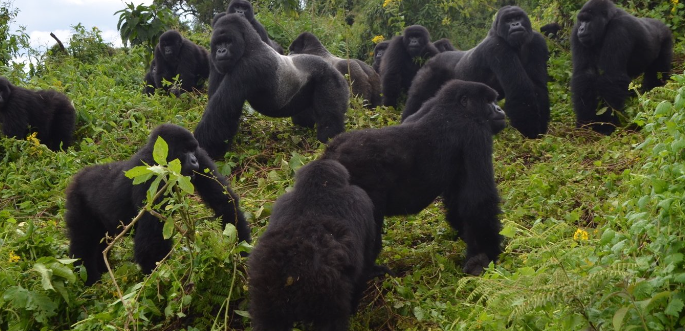Gorilla Group Dynamics in the Wild
Gorillas are fascinating creatures, and understanding their social structures can provide significant insights into their behavior and ecology. Studying gorilla group dynamics not only enhances our appreciation for these remarkable animals but also informs conservation efforts as their habitats face numerous threats.
Social Structure of Gorilla Groups
Gorillas typically live in family groups led by a dominant silverback male. This silverback, often the oldest and strongest in the group, serves as the protector and leader, making decisions about foraging and travel. These groups can vary in size, usually consisting of 5 to 30 individuals, including females, their offspring, and sometimes younger males. The relationships within these groups can be complex, with strong bonds formed between mothers and their young, while sibling interactions may also exhibit playful and nurturing behaviors. Understanding these social structures helps researchers track their health and well-being, which is crucial for conservation success.
Role of Dominance and Hierarchy
Dominance plays a crucial role in the social dynamics of gorilla groups. The silverback not only leads but also mediates conflicts among group members, maintaining a delicate balance within the group. Young males often leave their natal groups to avoid potential conflicts with the dominant silverback, seeking to join or establish their own groups. In addition to direct leadership, the presence of a strong leader can significantly impact the survival rates of the group. A well-established silverback can defend against threats from poachers or other wildlife, whereas a weaker leader may result in tension or even fragmentation within the group. Understanding these hierarchy dynamics can aid in developing effective conservation strategies that support healthy group structures.
Behavioral Interactions and Communication
Gorillas display a range of behaviors that are essential for their social interactions. They communicate through vocalizations, gestures, and even facial expressions to convey emotions, solicit grooming, or signal alarm. Grooming is especially important for reinforcing social bonds, as it helps establish and maintain alliances among group members. Observing these interactions provides insights into their emotional lives and social complexities, showcasing their intelligence and adaptability. Researchers pay attention to these behavioral patterns to estimate the overall health of gorilla populations and to develop strategies aimed at protecting their natural habitats.
In conclusion, understanding gorilla group dynamics in the wild offers valuable insights into their social structures, behaviors, and the importance of strong leadership. It also highlights the necessity of conservation efforts to ensure these magnificent creatures thrive in their natural habitats. To learn more about gorillas and how you can contribute to their preservation, consider exploring local conservation initiatives or engaging with wildlife organizations dedicated to studying and protecting these incredible animals.

